Ловушка для внимания. Как вызвать и удержать интерес к идее, проекту или продукту [заметки]
Сноски
1
Волли – персонаж книг Мартина Хэндфорда, носит свитер и шапочку с красно-белыми полосками. – Прим. ред.
2
Инструмент контраста Das Plankton можно найти здесь: http://www.dasplankton.de/ContrastA/.
3
Проверка контраста WebAIM: http://webaim.org/resources/contrastchecker/.
4
Маккэндлесс Д. Инфографика: Самые интересные данные в графическом представлении / Пер. с англ. – М.: Манн, Иванов и Фербер, 2013.
5
Гладуэлл М. Сила мгновенных решений: Интуиция как навык / Пер. с англ. – М.: Альпина Паблишер, 2015.
6
На сайте проекта Noun Project (www.thenounproject.com) собраны тысячи простых, красивых и привлекающих внимание символов и иконок практически для всего что угодно.
7
Пинк Д. Драйв: Что на самом деле нас мотивирует / Пер. с англ. – М.: Альпина Паблишер, 2014.
8
Пинк Д. Человеку свойственно продавать: Удивительная правда о том, как побуждать других к действию / Пер. с англ. – М.: Альпина Паблишер, 2015.
9
Сэндберг Ш., Сковилл Н. Не бойся действовать: Женщина, работа и воля к лидерству / Пер. с англ. – М.: Альпина Паблишер, 2015.
10
Льюкс С. Власть: Радикальный взгляд / Пер. с англ. – М.: Высшая школа экономики, 2010.
11
Фокс Кабейн О. Харизма: Как влиять, убеждать и вдохновлять / Пер. с англ. – М.: Альпина Паблишер, 2015.
12
Шуровьески Д. Мудрость толпы / Пер. с англ. – М.: Вильямс, 2007.
13
Созвучно с популярным афроамериканским женским именем Ласония. – Прим. пер.
14
Основатель Digg. – Прим. пер.
15
Уильям Шетнер – канадский актер и писатель. – Прим. ред.
16
Бэткид – маленький Бэтмен. – Прим. ред.
17
Вайнерчук Г. Увлечение – это бизнес: Как зарабатывать на том, что вам нравится / Пер. с англ. – М.: Альпина Паблишер, 2011.
Комментарии
1
Up, directed by Pete Docter (Burbank, CA: Walt Disney Studios Home Entertainment, 2009), DVD.
2
Richard Alleyne, “Welcome to the Information Age – 174 Newspapers a Day,” Telegraph (London), February 11, 2011, http://www.telegraph.co.uk/science/science-news/8316534/Welcome-to-the-information-age-174-newspapers-a-day.html.
3
Адам Газзали, интервью с автором по телефону, 23 июля 2013 г.
4
Rachel Emma Silverman, “Workplace Distractions: Here’s Why You Won’t Finish This Article,” The Wall Street Journal, December 11, 2012.
5
Larry D. Rosen et al., “An Empirical Examination of the Educational Impact of Text Message – Induced Task Switching in the Classroom: Educational Implications and Strategies to Enhance Learning,” Psicologia Educativa 17, no. 2 (2011): 163–77.
6
Eyal Ophir, Clifford Nass, and Anthony D. Wagner, “Cognitive Control in Media Multitaskers,” Proceedings of the National Academy of Sciences 106, no. 37 (2009): 15583–87.
7
Sanbonmatsu, David M., David L. Strayer, Nathan Medeiros-Ward, and Jason M. Watson, “Who Multi-Tasks and Why? Multi-Tasking Ability, Perceived Multi-Tasking Ability, Impulsivity, and Sensation Seeking,” PloS One 8, no. 1 (2013): e54402.
8
Эдриан Гренье и Томас де Зенготита, интервью с автором, Нью-Йорк, 16 июля 2013 г.
9
Joshua New, Leda Cosmides, and John Tooby, “Category-Specific Attention for Animals Reflects Ancestral Priorities, Not Expertise,” Proceedings of the National Academy of Sciences 104, no. 42 (2007): 16598–603.
10
Addie Johnson and Robert W. Proctor, “Memory and Attention,” in Attention: Theory and Practice (Thousand Oaks, CA: Sage Publications, 2004), 191–225.
11
Stefanie J. Krauth, et al., “An In-Depth Analysis of a Piece of Shit: Distribution of Schistosoma mansoni and Hookworm Eggs in Human Stool,” PLoS Neglected Tropical Diseases 6, no. 12 (2012): e1969; Ross Pomeroy, “An In-Depth Analysis of a Piece of $%&@,” RealClearScience, December 27, 2012, http://www.realclearscience.com/journal_club/2012/12/27/an_in-depth_analysis_of_a_piece_of__106431.html.
12
Luis Carretié, et al., “Automatic Attention to Emotional Stimuli: Neural Correlates,” Human Brain Mapping 22, no. 4 (2004): 290–99.
13
Deborah Wearing, Forever Today (Tyne and Wear, UK: Soundings, 2006 г.); The Mind, directed by George Page (Alexandria, VA: PBS Video, 1988).
14
Kent C. Berridge and Terry E. Robinson, “What Is the Role of Dopamine in Reward: Hedonic Impact, Reward Learning, or Incentive Salience?” Brain Research Reviews 28, no. 3 (1998): 309–69.
15
Адам Газзали, интервью с автором по телефону, 23 июля 2013 г.
16
Джон Суэллер, интервью с автором по Skype 29 мая 2013 г.
17
Ronald Gallimore et al., “The Effects of Elaboration and Rehearsal on Long-Term Retention of Shape Names by Kindergarteners,” American Educational Research Journal 14, no. 4 (1977): 471–83.
18
Алан Бэдли, интервью c автором по телефону, 21 мая 2013 г.
19
William James, “Attention,” in The Principles of Psychology (New York: Dover Publications, 1950).
20
Stephen Silverman, “Beyonce Releases Surprise Self-Titled Album,” People, December 13, 2013, http://www.people.com/people/article/0,20765913,00.html.
21
Andrew Hampp and Jason Lipshutz, “Beyonce Unexpectedly Releases New Self-Titled ‘Visual Album’ on iTunes,” Billboard, December 13, 2013, http://www.billboard.com/articles/columns/the-juice/5827398/beyonce-unexpectedly-releases-new-self-titled-visual-album-on.
22
Bob Lefsetz, “Beyonce’s Album,” Lefsetz Letter blog, December 16, 2013, http://lefsetz.com/wordpress/index.php/archives/2013/12/16/beyonces-album/.
23
Nicholas Carlson, “Inside Pinterest: An Overnight Success Four Years in the Making,” Business Insider, May 1, 2012, http://www.businessinsider.com/inside-pinterest-an-overnight-success-four-years-in-the-making-2012–4.
24
Tom Cheshire, “In Depth: How Rovio Made Angry Birds a Winner (And What’s Next),” Wired, March 7, 2011, http://www.wired.co.uk/magazine/archive/2011/04/features/how-rovio-made-angry-birds-a-winner.
25
Суэллер, интервью с автором.
26
Jeff Ryan, Super Mario: How Nintendo Conquered America (New York: Penguin, 2011).
27
Julia Gögler et al., “Ménage À Trois – Two Endemic Species of Deceptive Orchids and One Pollinator Species,” Evolution 63, no. 9 (2009): 2222–34.
28
Daniela Niesta Kayser, Andrew J. Elliot, and Roger Feltman, “Red and Romantic Behavior in Men Viewing Women,” European Journal of Social Psychology 40, no. 6 (2010): 901–8.
29
J. A. Maga, “Influence of Color on Taste Thresholds,” Chemical Senses 1, no. 1 (1974): 115–19.
30
Yorzinski, Jessica L., Michael J. Penkunas, Michael L. Platt, and Richard G. Coss, “Dangerous Animals Capture and Maintain Attention in Humans,” Evolutionary Psychology 12, no. 3 (2014): 534–48.
31
R. Reed Hunt, “The Subtlety of Distinctiveness: What von Restorff Really Did,” Psychonomic Bulletin & Review 2, no. 1 (1995): 105–12.
32
Nicolas Guéguen, “Color and Women Hitchhikers’ Attractiveness: Gentlemen Drivers Prefer Red,” Color Research & Application 37, no. 1 (2012): 76–78.
33
Andrew J. Elliot and Daniela Niesta, “Romantic Red: Red Enhances Men’s Attraction to Women,” Journal of Personality and Social Psychology 95, no. 5 (2008): 1150–64.
34
Dan McGrady, “How We Improved Our Conversion Rate by 72 %,”Dmix blog, 2011, http://web.archive.org/web/20140413033138/http://dmix.ca/2010/05/how-we-increased-our-conversion-rate-by-72/.
35
“B2B Landing Page Optimization Lifts Lead Generation by 32.5 %–Within Strict Branding Guidelines,” WiderFunnel Marketing Conversion Optimization, http://www.widerfunnel.com/proof/case-studies/sap-landing-page-optimization (accessed September 12, 2014).
36
Hans-Peter Frey et al., “Beyond Correlation: Do Color Features Influence Attention in Rainforest?” Frontiers in Human Neuroscience 5 (2011): 36.
37
Roger T. Hanlon and John B. Messenger, “Adaptive Coloration in Young Cuttlefish (Sepia officinalis L.): The Morphology and Development of Body Patterns and Their Relation to Behaviour,” Philosophical Transactions of the Royal Society of London, Series B, Biological Sciences 320, no. 1200 (1988): 437–87.
38
Mel White, “Why Birds Attacked the Peace Doves in Rome,” National Geographic, January 27, 2014, http://news.nationalgeographic.com/news/2014/01/140127-white-peace-doves-attacked-birds-rome-vatican-pope/.
39
Michael Aagaard, “How to Design Call to Action Buttons that Convert,” The Landing Page & Conversion Rate Optimization Blog, Unbounce, May 22, 2013, http://unbounce.com/conversion-rate-optimization/design-call-to-action-buttons/.
40
Adam L. Alter, “Colors,” in Drunk Tank Pink: And Other Unexpected Forces that Shape How We Think, Feel, and Behave (New York: Penguin, 2013).
41
N. Yoshioka, “[Epidemiological Study of Suicide in Japan – Is It Possible to Reduce Committing Suicide?]” Nihon Hoigaku Zasshi 52, no. 5 (1998): 286–93; Keith W. Jacobs and James F. Suess, “Effects of Four Psychological Primary Colors on Anxiety State,” Perceptual and Motor Skills 41, no. 1 (1975): 207–10; Robert E. Strong et al., “Narrow-Band Blue-Light Treatment of Seasonal Affective Disorder in Adults and the Influence of Additional Nonseasonal Symptoms,” Depression and Anxiety 26, no. 3 (2009): 273–78.
42
Cliff Kuang, “Infographic of the Day: What Colors Mean Across 10 Cultures,” Fast Company, April 26, 2010, http://www.fastcompany.com/1627581/infographic-day-what-colors-mean-across-10-cultures.
43
Patricia Valdez and Albert Mehrabian, “Effects of Color on Emotions,” Journal of Experimental Psychology: General 123, no. 4 (1994): 394–409.
44
Anton J. M. de Craen et al., “Effect of Colour of Drugs: Systematic Review of Perceived Effect of Drugs and of Their Effectiveness,” British Medical Journal 313, no. 7072 (1996): 1624–26.
45
Lauren I. Labrecque and George R. Milne, “Exciting Red and Competent Blue: The Importance of Color in Marketing,” Journal of the Academy of Marketing Science 40, no. 5 (2011): 711–27.
46
Mark Wilson, “Why the Security Bug Heartbleed Has a Catchy Logo,” Fast Company, April 11, 2014, http://www.fastcodesign.com/3028982/why-the-security-bug-heartbleed-has-a-catchy-logo.
47
Gráinne M. Fitzsimons, Tanya L. Chartrand, and Gavan J. Fitzsimons, “Automatic Effects of Brand Exposure on Motivated Behavior: How Apple Makes You ‘Think Different,’ ” Journal of Consumer Research 35, no. 1 (2008): 21–35.
48
Daniel Kahneman, “The Associative Machine,” in Thinking, Fast and Slow (New York: Farrar, Straus and Giroux, 2011), 50–58.
49
Bill Prady, Steven Molaro, and Jim Reynolds, “The Cohabitation Formulation,” The Big Bang Theory, season 4, episode 16, directed by Mark Cendrowski, aired February 17, 2011 (New York: CBS).
50
Lawrence E. Williams and John A. Bargh, “Experiencing Physical Warmth Promotes Interpersonal Warmth,” Science 322, no. 5901 (2008): 606–7.
51
Simon Storey and Lance Workman, “The Effects of Temperature Priming on Cooperation in the Iterated Prisoner’s Dilemma,” Evolutionary Psychology 11, no. 1 (2013): 52–67.
52
Chris Eccleston and Geert Crombez, “Pain Demands Attention: A Cognitive-Affective Model of the Interruptive Function of Pain,” Psychological Bulletin 125, no. 3 (1999): 356–66.
53
Judee K. Burgoon, “Relational Message Interpretations of Touch, Conversational Distance, and Posture,” Journal of Nonverbal Behavior 15, no. 4 (1991): 233–59; Glen P. Williams and Chris L. Kleinke, “Effects of Mutual Gaze and Touch on Attraction, Mood, and Cardiovascular Reactivity,” Journal of Research in Personality 27, no. 2 (1993): 170–83.
54
Kate McCulley, “How I Survived a Mugging,” Adventurous Kate’s Solo Female Travel Blog, October 12, 2010, http://www.adventurouskate.com/how-i-survived-a-mugging/.
55
Carles Escera et al., “Neural Mechanisms of Involuntary Attention to Acoustic Novelty and Change,” Journal of Cognitive Neuroscience 10, no. 5 (1998): 590–604; Fabrice B. R. Parmentier, “Towards a Cognitive Model of Distraction by Auditory Novelty: The Role of Involuntary Attention Capture and Semantic Processing,” Cognition 109, no. 3 (2008): 345–62; Dennis P. Carmody and Michael Lewis, “Brain Activation when Hearing One’s Own and Others’ Names,” Brain Research 1116, no. 1 (2006): 153–58.
56
Майкл Познер, интервью с автором по телефону, 3 июля 2013 г.
57
E. Colin Cherry, “Some Experiments on the Recognition of Speech, with One and with Two Ears,” Journal of the Acoustical Society of America 25, no. 5 (1953): 975–79.
58
Anne M. Treisman, “The Effect of Irrelevant Material on the Efficiency of Selective Listening,” American Journal of Psychology 77, no. 4 (1964): 533–46.
59
Noelle Wood and Nelson Cowan, “The Cocktail Party Phenomenon Revisited: How Frequent Are Attention Shifts to One’s Name in an Irrelevant Auditory Channel?” Journal of Experimental Psychology: Learning, Memory, and Cognition 21, no. 1 (1995): 255–60.
60
Megan Garber, “Ghost Army: The Inflatable Tanks that Fooled Hitler,” The Atlantic, May 22, 2013, http://www.theatlantic.com/technology/archive/2013/05/ghost-army-the-inflatable-tanks-that-fooled-hitler/276137/; The Ghost Army, directed by Peter Coyote (Arlington, VA: PBS Distribution, 2013), DVD.
61
Sarah Everts, “How Advertisers Convinced Americans They Smelled Bad,” Smithsonian.com, August 2, 2012, http://www.smithsonianmag.com/history-archaeology/How-Advertisers-Convinced-Americans-They-Smelled-Bad-164779646.html.
62
Дитрам Шефель, интервью с автором по телефону, 5 февраля 2014 г.
63
Elizabeth F. Loftus and John C. Palmer, “Reconstruction of Automobile Destruction: An Example of the Interaction Between Language and Memory,” Journal of Verbal Learning and Verbal Behavior 13, no. 5 (1974): 585–89.
64
Marianne Bertrand and Sendhil Mullainathan, “Are Emily and Brendan More Employable than Lakisha and Jamal? A Field Experiment on Labor Market Discrimination” (working paper, Univ. of Chicago, Graduate School of Business, 2002).
65
Will Wei, “How Pandora Survived More than 300 VC Rejections,” Business Insider, July 14, 2010, http://www.businessinsider.com/pandora-vc-2010–7.
66
Robert Strohmeyer, “The 7 Worst Tech Predictions of All Time,” TechHive, December 31, 2008, http://www.techhive.com/article/155984/worst_tech_predictions.html.
67
Gene Weingarten, “Pearls Before Breakfast,” The Washington Post, April 8, 2007.
68
Nina Verdelli, “The Violin and the Street,” Citizen Brooklyn, n. d., http://www.citizenbrooklyn.com/topics/fashion/the-violin-and-the-street/.
69
Сьюзан Кезер, интервью с автором по телефону, 26 мюля 2013 г.
70
Alhan Keser, “Why Joshua Bell Failed in the Subway,” Alhan Keser blog, November 22, 2012, http://web.archive.org/web/20130806230315/http://alhan.co/why-joshua-bell-failed-in-subway/.
71
Press Association, “Rush Hour Traffic Tops Poll of Everyday Stresses,” The Guardian, October 31, 2000, http://www.theguardian.com/uk/2000/nov/01/transport.world.
72
Кезер, интервью с автором.
73
Adam Wooten, “International Business: Wrong Flowers Can Mean Death for Global Business,” Deseret News, February 4, 2011, http://www.deseretnews.com/article/705365824/Wrong-flowers-can-mean-death-for-global-business.html.
74
Frank Luntz, Words that Work: It’s Not What You Say, It’s What People Hear (New York: Hyperion, 2007).
75
Tommy Christopher, “How Fox News, CNN, and MSNBC Covered Chris Christie ‘Bridgegate’ on Wednesday,” Mediaite, January 9, 2014, http://www.mediaite.com/tv/how-fox-news-cnn-and-msnbc-covered-chris-christie-bridgegate-on-wednesday/.
76
Lynn Hasher, David Goldstein, and Thomas Toppino, “Frequency and the Conference of Referential Validity,” Journal of Verbal Learning and Verbal Behavior 16, no. 1 (1977): 107–12.
77
Номера 1 и 4 неверны: команда Тулейнского университета победила команду Темпльского университета в первой игре чемпионата Sugar Bowl (20:14). За пределами Нью-Йорка и Чикаго самым высоким зданием является здание Bank of America Plaza в Атланте.
78
Wesley G. Moons, Diane M. Mackie, and Teresa Garcia-Marques, “The Impact of Repetition-Induced Familiarity on Agreement with Weak and Strong Arguments,” Journal of Personality and Social Psychology 96, no. 1 (2009): 32–44.
79
Rachel Feintzeig, Mike Spector, and Julie Jargon, “Twinkie Maker Hostess to Close,” The Wall Street Journal, November 16, 2012, http://online.wsj.com/news/articles/SB10001424127887324556304578122632560842670.
80
Michael Lynn, “Scarcity Effects on Value: A Quantitative Review of the Commodity Theory Literature,” Psychology & Marketing 8, no. 1 (1991): 43–57.
81
Theo M. M. Verhallen and Henry S. J. Robben, “Scarcity and Preference: An Experiment on Unavailability and Product Evaluation,” Journal of Economic Psychology 15, no. 2 (1994): 315–31.
82
Associated Press, “Hostess: Twinkies Demand at Record High,” The Huffington Post, July 18, 2013, http://www.huffingtonpost.com/2013/07/18/hostess-twinkies-demand_n_3615900.html.
83
Stephen Worchel, Jerry Lee, and Akanbi Adewole, “Effects of Supply and Demand on Ratings of Object Value,” Journal of Personality and Social Psychology 32, no. 5 (1975): 906–14.
84
Джош Элман, интервью с автором, Халф-Мун-Бей, Калифорния, 17 июня 2013 г.
85
Nicholas Carlson, “This Post Has All the Black Friday Stats You Need to Sound Smart in Meetings,” Business Insider, December 13, 2013, http://www.businessinsider.com/2013-black-friday-stats-2013–12.
86
Jeff Rosenblum, “How Patagonia Makes More Money by Trying to Make Less,” Fast Company, December 6, 2012, http://www.fastcoexist.com/1681023/how-patagonia-makes-more-money-by-trying-to-make-less; Kyle Stock, “Patagonia’s Confusing and Effective Campaign to Grudgingly Sell Stuff,” Bloomberg Business Week, November 25, 2013, http://www.businessweek.com/articles/2013–11–25/patagonias-confusing-and-effective-campaign-to-grudgingly-sell-stuff; Kyle Stock, “Patagonia’s ‘Buy Less’ Plea Spurs More Buying,” Bloomberg Business Week, August 28, 2013, http://www.businessweek.com/articles/2013–08–28/patagonias-buy-less-plea-spurs-more-buying.
87
Marilyn Boltz, Matthew Schulkind, and Suzanne Kantra, “Effects of Background Music on the Remembering of Filmed Events,” Memory & Cognition 19, no. 6 (1991): 593–606.
88
Judee K. Burgoon and Jerold L. Hale, “Nonverbal Expectancy Violations: Model Elaboration and Application to Immediacy Behaviors,” Communications Monographs 55, no. 1 (1988): 58–79.
89
Scott Goldthorp, “The 2012 Rosenthal Prize for Innovation in Math Teaching: Hands-On Data Analysis,” MoMath, 2012, http://momath.org/wp-content/uploads/RosenthalPrize2012_Winning_Lesson_Plan.pdf; Evelyn Lamb, “Award-Winning Teachers Put Math on Hands and Heads,” Roots of Unity blog, Scientific American, May 3, 2013, http://blogs.scientificamerican.com/roots-of-unity/2013/05/03/math-on-hands-and-heads-rosenthal-prize/.
90
Mark A. McDaniel et al., “The Bizarreness Effect: It’s Not Surprising, It’s Complex,” Journal of Experimental Psychology: Learning, Memory, and Cognition 21, no. 2 (1995): 422–35.
91
Igor Bobic, “Todd Akin Just Can’t Stop Talking About Rape,” The Huffington Post, July 17, 2014, http://www.huffingtonpost.com/2014/07/17/todd-akin-rape_n_5595270.html.
92
Tony Thwaites, Lloyd Davis, and Warwick Mules, “Advertisement,” in Introducing Cultural and Media Studies: A Semiotic Approach (Houndmills, Basingstoke, Hampshire: Palgrave, 2002), 50–52.
93
Farhad Manjoo, “Invincible Apple: 10 Lessons from the Coolest Company Anywhere,” Fast Company, July 1, 2010, http://www.fastcompany.com/1659056/invincible-apple-10-lessons-coolest-company-anywhere.
94
Jürgen Huber, Michael Kirchler, and Matthias Sutter, “Is More Information Always Better?: Experimental Financial Markets with Cumulative Information,” Journal of Economic Behavior & Organization 65, no. 1 (2008): 86–104.
95
Джон Суэллер, интервью с автором по Skype, 29 мая 2013 г.
96
Суэллер, интервью с автором.
97
Иеремия Оуянг, интервью с автором по телефону, 14 мая 2013 г.
98
Рейчел Лайтфут Мелби, интервью с автором, Сан-Бруно, Калифорния, 12 апреля 2013 г.
99
Barb Dybwad, “When Videos Buffer, Viewers Leave… in Droves [STATS],” December 11, 2009, Mashable, http://mashable.com/2009/12/11/online-video-buffering/.
100
Lisa Belkin, “Moms and Motrin,” Motherlode blog, New York Times, November 17, 2008, http://parenting.blogs.nytimes.com/2008/11/17/moms-and-motrin/.
101
Seth Stevenson, “The Creatures from the Sandwich Shop,” Slate, February 23, 2004, http://www.slate.com/articles/business/ad_report_card/2004/02/the_creatures_from_the_sandwich_shop.html.
102
Jane Levere, “A Guy’s Guy Tired of Plain Old Soap? Old Spice Is Counting on It,” New York Times, August 1, 2003, http://www.nytimes.com/2003/08/01/business/media-business-advertising-guy-s-guy-tired-plain-old-soap-old-spice-counting-it.html.
103
Марк Фицлофф, интервью с автором по телефону, 13 июля 2013 г.; Brenna Ehrlich, “The Old Spice Social Media Campaign by the Numbers,” Mashable, July 15, 2010, http://mashable.com/2010/07/15/old-spice-stats/; David Griner, “Hey Old Spice Haters, Sales Are Up 107 %,” AdWeek, July 27, 2010, http://www.adweek.com/adfreak/hey-old-spice-haters-sales-are-107–12422.
104
Rick Kissell, “It’s Official: ‘Game of Thrones’ Is HBO’s Most Popular Series Ever,” Variety, June 5, 2014, http://variety.com/2014/tv/ratings/its-official-game-of-thrones-is-hbos-most-popular-series-ever-1201214357/.
105
Ken Tucker, “Why Is Game of Thrones So Popular?” BBC, April 7, 2014, http://www.bbc.com/culture/story/20140407-why-people-love-game-of-thrones.
106
Leslie A. Perlow, Sleeping with Your Smartphone: How to Break the 24/7 Habit and Change the Way You Work (Boston: Harvard Business, 2012).
107
Doug Aamoth, “Study Says We Unlock Our Phones a LOT Each Day,” Time, October 8, 2013, http://techland.time.com/2013/10/08/study-says-we-unlock-our-phones-a-lot-each-day/.
108
Кент Берридж, интервью с автором по телефону, 16 апреля 2014 г.
109
Cash, Hilarie, Cosette D. Rae, Ann H. Steel, and Alexander Winkler, “Internet Addiction: A Brief Summary of Research and Practice,” Current Psychiatry Reviews 8, no. 4 (2012): 292.
110
Brian A. Anderson, Patryk A. Laurent, and Steven Yantis, “Value-Driven Attentional Capture,” Proceedings of the National Academy of Sciences 108, no. 25 (2011): 10367–71.
111
Richard M. Ryan and Edward L. Deci, “Intrinsic and Extrinsic Motivations: Classic Definitions and New Directions,” Contemporary Educational Psychology 25, no. 1 (2000): 54–67.
112
Jessica Guynn, “L.A. Startup Looks for the Most Interesting Engineers in the World,” Los Angeles Times, December 1, 2011, http://latimesblogs.latimes.com/technology/2011/12/la-startup-is-looking-for-the-most-interesting-engineers-in-the-world.html.
113
Дэниел Пинк, интервью с автором по телефону, 16 июня 2014 г.
114
Timothy A. Judge et al., “The Relationship Between Pay and Job Satisfaction: A Meta-Analysis of the Literature,” Journal of Vocational Behavior 77, no. 2 (2010): 157–67.
115
Gregory S. Berns et al., “Predictability Modulates Human Brain Response to Reward,” Journal of Neuroscience 21, no. 8 (2001): 2793–98.
116
Брайан Вонг, интервью с автором по телефону, 17 апреля 2014 г.
117
Chou, Yu-kai, “The Six Different Contextual Types of Rewards in Gamification,” Yu-kai Chou Gamification. November 11, 2013. http://www.yukaichou.com/marketing-gamification/six-context-types-rewards-gamification.
118
Leslie Scrivener, “Terry’s Running for the Cancer Society,” Montreal Gazette, April 28, 1980; Leslie Scrivener, Terry Fox: His Story, rev. ed. (New York: McClelland & Stewart, 2010).
119
Пинк, интервью с автором.
120
James K. Harter et al., “Causal Impact of Employee Work Perceptions on the Bottom Line of Organizations,” Perspectives on Psychological Science 5, no. 4 (2010): 378–89.
121
Шерил Сэндберг, интервью с автором по телефону, 13 мая 2013 г.
122
Steven Reiss, Who Am I?: 16 Basic Desires that Motivate Our Actions and Define Our Personalities (New York: Penguin, 2002).
123
Пинк, интервью с автором.
124
Robert Weisman, “An Iconoclast’s Ideas for Redefining Management,” Boston.com, May 9, 2004, http://www.boston.com/business/articles/2004/05/09/an_iconoclasts_ideas_for_redefining_management/.
125
Amy Sawitta Lefevre, “Bangkok ‘Smoking Kid’ Lights Up Internet with Quit Message,” Reuters, June 22, 2012, http://www.reuters.com/article/2012/06/22/net-us-thailand-smoking-idUSBRE85L0E420120622; Ogilvy & Mather Bangkok, “Smoking Kid – Best of #OgilvyCannes 2012 / #CannesLions,” YouTube video, June 6, 2013, https://www.youtube.com/watch?v=g_YZ_PtMkw0.
126
Берридж, интервью с автором.
127
Maryellen Hamilton and Suparna Rajaram, “The Concreteness Effect in Implicit and Explicit Memory Tests,” Journal of Memory and Language 44, no. 1 (2001): 96–117.
128
Dan Ariely, Emir Kamenica, and Dražen Prelec, “Man’s Search for Meaning: The Case of Legos,” Journal of Economic Behavior & Organization 67, no. 3 (2008): 671–77.
129
Тарик Шокат, интервью с автором по телефону, 25 июня 2013 г.
130
Julie Jargon, “At McDonald’s, Salads Just Don’t Sell,” The Wall Street Journal, October 18, 2013, http://online.wsj.com/news/articles/SB10001424052702304384104579139871559464960.
131
Keith Wilcox et al., “Vicarious Goal Fulfillment: When the Mere Presence of a Healthy Option Leads to an Ironically Indulgent Decision,” Journal of Consumer Research 36, no. 3 (2009): 380–93.
132
Ayelet Fishbach and Kristian Ove R. Myrseth, “The Dieter’s Dilemma: Identifying When and How to Control Consumption,” in Obesity Prevention: The Role of Brain and Society on Individual Behavior, ed. Laurette Dube et al. (London: Elsevier, 2010), 353–64.
133
Josh Levs, “J. K. Rowling Revealed as Secret Author of Crime Novel,” CNN, July 16, 2013, http://www.cnn.com/2013/07/14/world/rowling-secret-book/; Alex Hern, “Sales of ‘The Cuckoo’s Calling’ Surge by 150,000 % After JK Rowling Revealed as Author,” New Statesman, July 14, 2013, http://www.newstatesman.com/2013/07/sales-cuckoos-calling-surge-150000-after-jk-rowling-revealed-author.
134
Matthew J. Salganik, Peter Sheridan Dodds, and Duncan J. Watts, “Experimental Study of Inequality and Unpredictability in an Artificial Cultural Market,” Science 311, no. 5762 (2006): 854–56.
135
Jan B. Engelmann et al., “Expert Financial Advice Neurobiologically ‘Offloads’ Financial Decision Making Under Risk,” PLoS One, 4, no. 3 (2009): e4957.
136
Robert B. Cialdini, Influence: The Psychology of Persuasion, rev. ed. (New York: HarperCollins, 1993).
137
“2014 Edelman Trust Barometer,” Edelman, http://www.edelman.com/insights/intellectual-property/2014-edelman-trust-barometer/.
138
Hajo Adam and Adam D. Galinsky, “Enclothed Cognition,” Journal of Experimental Social Psychology 48, no. 4 (2012): 918–25.
139
K. Anders Ericsson, et al., eds, The Cambridge Handbook of Expertise and Expert Performance (Cambridge, UK: Cambridge Univ. Press, 2006).
140
Owen Jarus, “Mixed Martial Arts Celebrity Recruited for Ancient Roman Army,” LiveScience, March 29, 2012, http://www.livescience.com/19354-martial-artist-recruited-ancient-roman-army.html.
141
Stanley Milgram, “Behavioral Study of Obedience,” The Journal of Abnormal and Social Psychology 67, no. 4 (1963): 371–78.
142
Steven Lukes, Power: A Radical View (London: Macmillan, 1974).
143
Olivia Fox Cabane, The Charisma Myth: How Anyone Can Master the Art and Science of Personal Magnetism (New York: Penguin, 2012).
144
George Eaton, “Should Pre-Election Opinion Polls Be Banned? A Third of MPs Think So,” New Statesman, November 13, 2013, http://www.newstatesman.com/politics/2013/11/should-pre-election-opinion-polls-be-banned-third-mps-think-so.
145
Ian McAllister and Donley T. Studlar, “Bandwagon, Underdog, or Projection? Opinion Polls and Electoral Choice in Britain, 1979–1987,” Journal of Politics 53, no. 3 (1991): 720–41.
146
James Surowiecki, The Wisdom of Crowds: Why the Many Are Smarter than the Few and How Collective Wisdom Shapes Business, Economies, Societies, and Nations (New York: Doubleday, 2004).
147
Michael Anderson and Jeremy Magruder, “Learning from the Crowd: Regression Discontinuity Estimates of the Effects of an Online Review Database,” The Economic Journal 122, no. 563 (2012): 957–89.
148
Michael Luca, Reviews, Reputation, and Revenue: The Case of Yelp.com, No. 12–016 (Harvard Business School, 2011).
149
Lance Ulanoff, “Why Sony Won the Format War,” PC, February 19, 2008, http://www.pcmag.com/article2/0,2817,2264994,00.asp.
150
Solomon E. Asch, “Opinions and Social Pressure,” in Readings About the Social Animal, ed. Elliot Aronson (New York: Worth, 2004): 17–26.
151
Asch, “Opinions.”
152
Seth Borenstein, “Conformity Rules: Social Animals Really Do Exhibit Monkey-See, Monkey-Do Behavior, Research Shows,” Buffalo News, May 5, 2013, http://www.buffalonews.com/20130505/conformity_rules_social_animals_really_do_exhibit_monkey_see_monkey_do_behavior_research_shows.html.
153
Jeanne Theoharis, interview by Gwen Ifill, “Known for Single Act of Defiance, Rosa Parks Trained for Life Full of Activism,” PBS Newshour, February 7, 2013, http://www.pbs.org/newshour/bb/social_issues-jan-june13-rosaparks_02–07/.
154
Marisa Taylor, “Vitaminwater Gets Facebookers Brainstorming on a New Flavor,” Digits blog, The Wall Street Journal, September 8, 2009, http://blogs.wsj.com/digits/2009/09/08/vitaminwater-gets-facebookers-brainstorming-on-a-new-flavor/.
155
Kate Pickert and Adam Sorensen, “Inside Reddit’s Hunt for the Boston Bombers,” Time, April 23, 2013, http://nation.time.com/2013/04/23/inside-reddits-hunt-for-the-boston-bombers/.
156
Gonzalo De Polavieja and Gabriel Madirolas, “Wisdom of the Confident: Using Social Interactions to Eliminate the Bias in Wisdom of the Crowds” (paper, Cornell Univ. Library, June 30, 2014), http://arxiv.org/abs/1406.7578.
157
Genevieve Roberts, “Ben & Jerry’s Builds on Its Social-Values Approach,” New York Times, November 16, 2010, http://www.nytimes.com/2010/11/17/business/global/17iht-rbofice.html; “Ben Cohen & Jerry Greenfield,” Entrepreneur, October 10, 2008, http://www.entrepreneur.com/article/197626.
158
Jay Newton-Small, “The Rise and Fall of Elizabeth O’Bagy,” Time, September 17, 2013, http://swampland.time.com/2013/09/17/the-rise-and-fall-of-elizabeth-obagy/.
159
James Stewart, “In the Undoing of a C.E.O., a Puzzle,” New York Times, May 18, 2012, http://www.nytimes.com/2012/05/19/business/the-undoing-of-scott-thompson-at-yahoo-common-sense.html.
160
Brad Tuttle, “Warren Buffett’s Boring, Brilliant Wisdom,” Time, March 1, 2010, http://business.time.com/2010/03/01/warren-buffetts-boring-brilliant-wisdom/.
161
Mark Borkowski, The Fame Formula: How Hollywood’s Fixers, Fakers and Star Makers Created the Celebrity Industry (London: Pan Macmillan, 2009).
162
“Producing Gone with the Wind” (web exhibition, Harry Ransom Center, Univ. of Texas at Austin, through January 4, 2015), http://www.hrc.utexas.edu/exhibitions/web/gwtw/scarlett/.
163
Jason Abbruzzese, “Embrace the Binge: Netflix Viewers Average 2.3 Episodes per Sitting,” Mashable, December 13, 2013, http://mashable.com/2013/12/13/embrace-the-binge-netflix-data-shows-viewers-usually-watch-more-than-one-embargo-til-6am/.
164
Bluma Zeigarnik, “On Finished and Unfinished Tasks,” in A Source Book of Gestalt Psychology ed. Willis D. Ellis (New York: Routledge, 2013), 300–14.
165
James T. Heimbach and Jacob Jacoby, “The Zeigarnik Effect in Advertising,” in Proceedings of the Third Annual Conference of the Association for Consumer Research (1972), 746–58.
166
Malcolm R. Parks and Mara B. Adelman, “Communication Networks and the Development of Romantic Relationships: An Expansion of Uncertainty Reduction Theory,” Human Communication Research 10, no. 1 (1983): 55–79; Charles R. Berger, “Uncertain Outcome Values in Predicted Relationships: Uncertainty Reduction Theory Then and Now,” Human Communication Research 13, no. 1 (1986): 34–38; Kathy Kellermann and Rodney Reynolds, “When Ignorance Is Bliss: The Role of Motivation to Reduce Uncertainty in Uncertainty Reduction Theory,” Human Communication Research 17, no. 1 (1990): 5–75.
167
Anthony Breznican, “Mystifying Trailer Transforms Marketing,” USA Today, July 9, 2007, http://usatoday30.usatoday.com/life/movies/news/2007–07–08-abrams-trailer_N.htm.
168
Alison Vingiano, “This Is How a Woman’s Offensive Tweet Became the World’s Top Story,” BuzzFeed, December 21, 2013, http://www.buzzfeed.com/alisonvingiano/this-is-how-a-womans-offensive-tweet-became-the-worlds-top-s.
169
Vingiano, “This Is How.”
170
Jeff Bercovici, “Justine Sacco and the Self-InflictedPerils of Twitter,” Forbes, December 23, 2013, http://www.forbes.com/sites/jeffbercovici/2013/12/23/justine-sacco-and-the-self-inflicted-perils-of-twitter/.
171
Matt Singer, “Ten Movie Trailers that Spoil Their Movie,” IFC, August 5, 2010, http://www.ifc.com/fix/2010/08/ten-movie-trailers-that-spoil.
172
Dalton Ross, “Secrets and Jedis,” Entertainment Weekly, September 16, 2004, http://www.ew.com/ew/article/0,698013,00.html.
173
Dolf Zillmann, T. Alan Hay, and Jennings Bryant, “The Effect of Suspense and Its Resolution on the Appreciation of Dramatic Presentations,” Journal of Research in Personality 9, no. 4 (1975): 307–23.
174
Noël Carroll, “The Paradox of Suspense,” in Suspense: Conceptualizations, Theoretical Analyses, and Empirical Explorations, eds. Peter Vorderer, Hans J. Wulff, and Mike Friedrichsen (New York: Routledge, 2013), 71–91.
175
Robert Madrigal and Colleen Bee, “Suspense as an Experience of Mixed Emotions: Feelings of Hope and Fear While Watching Suspenseful Commercials,” Advances in Consumer Research 32, no. 1 (2005): 561.
176
Colleen C. Bee and Robert Madrigal, “It’s Not Whether You Win or Lose; It’s How the Game Is Played,” Journal of Advertising 41, no. 1 (2012): 47–58.
177
Стивен Содерберг, интервью с автором, Нью-Йорк, 17 июля 2013 г.
178
Eric McWhinnie, “How Much Will March Madness Cost Corporate America?” Wall St. Cheat Sheet, March 13, 2014, http://wallstcheatsheet.com/politics/how-much-will-march-madness-cost-corporate-america.html/; Erik Matuszewski, “March Madness Gambling Brings Out Warnings from NCAA to Tournament Players,” Bloomberg, March 17, 2011, http://www.bloomberg.com/news/2011–03–17/march-madness-gambling-brings-out-warnings-from-ncaa-to-tournament-players.html.
179
Harry E. Blanchard and Asghar Iran-Nejad, “Comprehension Processes and Eye Movement Patterns in the Reading of Surprise-Ending Stories,” Discourse Processes 10, no. 1 (1987): 127–38.
180
Emily Nussbaum, “Tune In Next Week,” The New Yorker, July 30, 2012, http://www.newyorker.com/arts/critics/television/2012/07/30/120730crte_television_nussbaum; Harold MacGrath, The Adventures of Kathlyn (Indianapolis: Bobbs-Merrill, 1914).
181
Mike Fenn, “60,000 Redditors Want to Know What’s in This Safe,” The Daily Dot, March 18, 2013, http://www.dailydot.com/society/reddit-whatsinthisthing-locked-safe-new-zealand/.
182
Ben Parr, “Startup Crisis Control: 6 Painful Lessons from Airbnb,” Mashable, July 29, 2011, http://mashable.com/2011/07/29/airbnb-pr-crisis/; Michael Arrington, “The Moment of Truth for Airbnb as User’s Home Is Utterly Trashed,” TechCrunch, July 27, 2011, http://techcrunch.com/2011/07/27/the-moment-of-truth-for-airbnb-as-users-home-is-utterly-trashed/.
183
Austin Carr, “The Secret to Airbnb’s Freakishly Rapid Orgy Response: ‘Scenario Planning,’ ” Fast Company, March 17, 2014, http://www.fastcompany.com/3027798/the-secret-to-airbnbs-freakishly-rapid-orgy-response-scenario-planning.
184
NPR, “How to Write a Great Mystery,” Talk of the Nation, July 28, 2008, http://www.npr.org/templates/story/story.php?storyId=92995184.
185
Mark Alford, “Isaac Newton: The First Physicist,” Washington Univ. in St. Louis, 1995, http://physics.wustl.edu/~alford/newton.html.
186
Кина Граннис, интервью с автором, Лос-Анджелес, 11 июня 2013 г.
187
Kina Grannis, “Gotta Digg,” YouTube, December 23, 2007, https://www.youtube.com/watch?v=XLLRsn_nr6s.
188
James A. Coan, Hillary S. Schaefer, and Richard J. Davidson, “Lending a Hand: Social Regulation of the Neural Response to Threat,” Psychological Science 17, no. 12 (2006): 1032–39.
189
Deirdra Funcheon, “Balloon Boy 2012: Three Years After the Hoax, Falcon Heene Fronts a Metal Band,” New Times Broward-Palm Beach, December 13, 2012, http://www.browardpalmbeach.com/2012–12–13/news/balloon-boy-2012-three-years-after-hoax-falcon-heene-fronts-a-metal-band/full/.
190
Yalda T. Uhls and Patricia M. Greenfield, “The Value of Fame: Preadolescent Perceptions of Popular Media and Their Relationship to Future Aspirations,” Developmental Psychology 48, no. 2 (2012): 315–26.
191
Jeremy Rifkin, The Empathic Civilization: The Race to Global Consciousness in a World in Crisis (New York: Penguin, 2009).
192
Дик Гуттман, интервью с автором по телефону, 11 мая 2013 г.
193
Ben Parr, “Likes, Retweets, Comments & the Rise of the Validation Society,” Ben Parr’s Entrepreneurial Musings blog, January 24, 2012, http://benparr.com/2012/01/validation-society/.
194
Jenna Wortham, “Valley of the Blahs: How Justin Bieber’s Troubles Exposed Twitter’s Achilles’ Heel,” Bits blog, New York Times, January 25, 2014, http://bits.blogs.nytimes.com/2014/01/25/valley-of-the-blahs-how-justin-biebers-downfall-exposed-twitters-achilles-heel/.
195
Джош Элман, интервью с автором, Халф-Мун-Бей, Калифорния, 17 июня 2013 г.
196
Carol Kuruvilla, “San Francisco Turns into Gotham City for Batkid,” Daily News, November 16, 2013, http://www.nydailynews.com/news/national/san-francisco-turns-gotham-city-batkid-article-1.1518454; Bill Chappell, “Holy Empathy! Batkid Lives Superhero Dream in San Francisco,” The Two-Way, NPR, November 15, 2013, http://www.npr.org/blogs/thetwo-way/2013/11/15/245480296/holy-empathy-batkid-lives-superhero-dream-in-san-francisco.
197
Deborah A. Small, George Loewenstein, and Paul Slovic, “Sympathy and Callousness: The Impact of Deliberative Thought on Donations to Identifiable and Statistical Victims,” Organizational Behavior and Human Decision Processes 102, no. 2 (2007): 143–53.
198
Скотт Харрисон, интервью с автором по телефону, Нью-Йорк, 7 июня 2013 г.
199
Donald Horton and R. Richard Wohl, “Mass Communication and Para-Social Interaction: Observations on Intimacy at a Distance,” Psychiatry 19, no. 3 (1956): 215–29.
200
Мона Номура, интервью с автором по СМС, 18 декабря 2014 г.
201
Kenneth Maxwell and Andrew Joyce, “The Man Who Made AKB48,” Japan RealTime blog, The Wall Street Journal, December 28, 2013, http://blogs.wsj.com/japanrealtime/2011/12/28/the-man-who-made-akb48/; Tokyo Hive, “Oricon Reveals ‘Artist Total Sales Revenue’ Ranking for 2012,” December 20, 2012, http://www.tokyohive.com/article/2012/12/oricon-reveals-artist-total-sales-revenue-ranking-for-2012/; Michael Cucek, “Japanese Idol,” Latitude blog, New York Times, June 14, 2013, http://latitude.blogs.nytimes.com/2013/06/14/japanese-idol/?gwh=F315862CCB765F470AA0C90C0F44296F.
202
Daniel Bentley, “I Asked for Eggs,” Medium, May 15, 2013, https://medium.com/this-happened-to-me/i-asked-for-eggs-c9e6fd3ef792.
203
Susan Marks, Finding Betty Crocker: The Secret Life of America’s First Lady of Food (New York: Simon & Schuster, 2010).
204
Алексия Цоцис, интервью с автором, Сан-Франциско, 19 июня 2013 г.
205
Марк Эклер, e-mail автору, 9 февраля 2013 г.
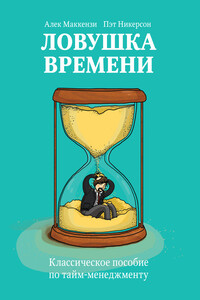
Это проверенное временем пособие по тайм-менеджменту поможет вам оптимизировать свой рабочий день, повысить продуктивность и справиться со всеми делами в срок. В книге вы найдете 14 самых распространенных ловушек времени и полезные советы и инструменты для их устранения.На русском языке публикуется впервые.
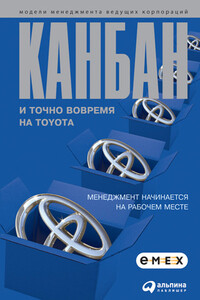
Эта книга – одно из самых читаемых изданий по управлению производством в Японии. В основу книги легли учебные материалы, подготовленные специалистами Toyota к семинарам по производственной системе Toyota, которые проходили в середине 1970-х годов. С тех пор прошло немало времени, но книга, неоднократно переиздававшаяся, в том числе и на английском языке, до сих пор служит кратким руководством по снижению затрат на производстве во всем мире. Системы «канбан» и «точно вовремя» – два метода управления производством и запасами, используемые в рамках производственной системы Toyota, – помогают найти лучшие способы повышения производительности процесса и качества продукции.
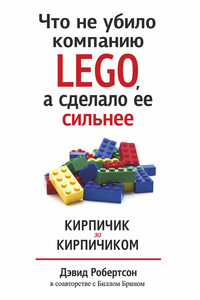
Кто из нас не знает, что такое LEGO? Но мало кому известно, какие изменения им пришлось пережить, чтобы достичь статуса самой популярной в мире компании по производству игрушек. Окунитесь в самое сердце LEGO, узнайте о причинах, приведших к кризису, и стратегиях, выведших ее на вершину.
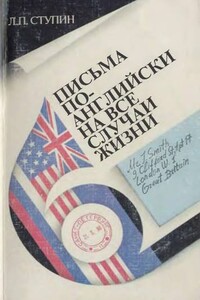
Пособие представляет собой собрание образцов писем на английском языке, затрагивающих самые разнообразные стороны повседневной жизни. Это дружеские и деловые письма, письма — приглашения в гости и письма-благодарности, письма-извинения и письма-просьбы. Книга знакомит с этикетом написания письма на английском языке, некоторыми правилами английской пунктуации и орфографии, а также содержит справочные материалы различного рода, необходимые при написании писем. Пособие рассчитано на широкий круг лиц, владеющих английским языком в той или иной степени и стремящихся поддерживать письменные контакты с представителями англоязычных стран. (Книга полностью на русском языке, все образцы писем на двух языках.)

Эта книга — о влиянии информационных технологий на социальную эволюцию. В ней показано, как современные компьютеры и Интернет делают возможным переход к новой общественной формации, в основе которой будут лежать взаимная прозрачность, репутация и децентрализованные методы принятия решений. В книге рассмотрены проблемы, вызванные искажениями и ограничениями распространения информации в современном мире. Предложены способы решения этих проблем с помощью распределённых компьютерных систем. Приведены примеры того, как развитие технологий уменьшает асимметричность информации и влияет на общественные институты, экономику и культуру.
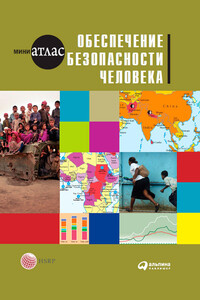
Со времени окончания холодной войны в мире произошли серьезные изменения. Количество вооруженных конфликтов уменьшилось, сократилось число боевых потерь, случаев проявления геноцида. Многие из этих изменений можно объяснить массовой политической активностью, инициируемой ООН и направленной на прекращение войн и мирное урегулирование проблем.Созданный специально для презентации подробной информации в небольшом формате, мини-атлас «Обеспечение безопасности человека» представляет собой краткое введение в самые актуальные вопросы безопасности.